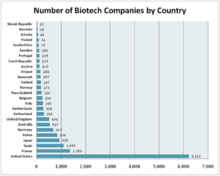Biomolecular engineering
Biomolecular engineers integrate knowledge of biological processes with the core knowledge of chemical engineering in order to focus on molecular level solutions to issues and problems in the life sciences related to the environment, agriculture, energy, industry, food production, biotechnology and medicine.
Herceptin, a humanized Mab for breast cancer treatment, became the first drug designed by a biomolecular engineering approach and was approved by the U.S. FDA.
With the increasing knowledge of biomolecules, the rate of finding new high-value molecules including but not limited to antibodies, enzymes, vaccines, and therapeutic peptides will continue to accelerate.
These molecules are the basic building blocks of life and by controlling, creating, and manipulating their form and function there are many new avenues and advantages available to society.
Secondary structure focuses on minor conformations that develop as a result of the hydrogen bonding between the amino acid chain.
However, if the majority of the orientation contains intramolecular hydrogen bonds, then the protein is referred to as globular and mostly consists of alpha helices.
A lot of engineering and research is focusing on the degree of deacetylation that provides the most effective result for specific applications.
The nucleotides are made of a nitrogenous base, a pentose (ribose for RNA or deoxyribose for DNA), and three phosphate groups.
By utilizing encapsulation properties and thermodynamic characteristics, lipids become significant assets in structure and energy control when engineering molecules.
Using recombinant techniques, it is possible to insert, delete, or alter a DNA sequence precisely without depending on the location of restriction sites.
[7][8] Other proteins, such as human growth hormone,[9] factor VIII, and hepatitis B vaccine are produced using similar means.
The early days of research in this field yielded discoveries about the potential of certain chemicals such as bisulfite and aminopurine to change certain bases in a gene.
This research continued, and other processes were developed to create certain nucleotide sequences on a gene, such as the use of restriction enzymes to fragment certain viral strands and use them as primers for bacterial plasmids.
[13] Site directed mutagenesis is a valuable technique that allows for the replacement of a single base in an oligonucleotide or gene.
The basics of this technique involve the preparation of a primer that will be a complementary strand to a wild type bacterial plasmid.
If an amino acid near the active site is mutated, the kinetic parameters may change drastically, or the enzyme might behave differently.
[14] These additions may be for ease of bioconjugation or to study the effects of amino acid changes on the form and function of the proteins.
Bio-immobilization and bio-conjugation is the purposeful manipulation of a biomolecule's mobility by chemical or physical means to obtain a desired property.
Variables to consider are pH,[20] temperature, solvent choice, ionic strength, orientation of active sites due to conjugation.
For enzymes, the conjugation will lower the kinetic rate due to a change in the 3-dimensional structure, so care must be taken to ensure functionality is not lost.
[21] The polymerase chain reaction (PCR) is a scientific technique that is used to replicate a piece of a DNA molecule by several orders of magnitude.
The most prominent biomolecular engineering technique seen in this primer design method is the initial bioimmobilization of a nucleotide to a solid support.
This step is commonly done via the formation of a covalent bond between the 3'-hydroxy group of the first nucleotide of the primer and the solid support material.
This step can be performed in a number of ways including a covalent linkage to a surface which may be coated with protein or another substance.
The use of the sandwich type ELISA quantifies the presence of this cytokine within spinal fluid or bone marrow samples.
People are willing to pay for good health, so most of the money directed towards the biotech industry stays in health-related ventures.
[citation needed] Scaling up a process involves using data from an experimental-scale operation (model or pilot plant) for the design of a large (scaled-up) unit, of commercial size.
For example, insulin produced by genetically modified Escherichia coli bacteria was initialized on a lab-scale, but to be made commercially viable had to be scaled up to an industrial level.
This discipline requires knowledge in the fields of electricity and biology to understand and utilize these concepts to improve or better current bioprocesses or technology.
Each step involves certain basic building blocks called "unit operations," such as extraction, filtration, and distillation.




